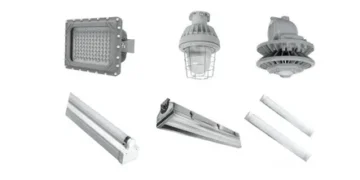If you’ve ever dipped your toes into the world of 3D printing, you already know it can feel like a bottomless rabbit hole of settings, materials, and techniques. While filament-based FDM printing is popular, resin printing has carved out its own space in the community for its stunning detail, smooth finishes, and precision.
But here’s the catch: not all resins are created equal.
Whether you’re crafting tabletop miniatures, dental models, or custom prototypes, choosing the right resin can make or break your final results. In this guide, I’ll walk you through everything I wish I knew when I first started using 3D printer resin—and how to pick the best one for your project.
Why Resin Choice Matters
At a glance, most liquid resins look the same: bottled in opaque containers, ranging from translucent to solid colors, and always with a bit of a chemical smell. But that’s where the similarities end.
The type of resin you use affects:
- Print accuracy and detail
- Post-processing time
- Mechanical strength
- Flexibility and durability
- Safety and handling
Choosing the wrong type might lead to fragile prints, warping, cracking, or a miserable clean-up process.
Types of 3D Printer Resin
Let’s break down the most common types of 3D printer resin available today:
1. Standard Resin
This is the go-to for most hobbyists and casual makers. It’s relatively affordable and gives great visual detail, perfect for artistic models and display pieces. However, it’s also brittle, so it’s not ideal for parts that will endure stress or frequent handling.
Best for:
- Figurines
- Display models
- Concept prototypes
2. Tough Resin
As the name implies, tough resin is engineered to withstand mechanical stress. It mimics the qualities of ABS plastic and can be used for functional parts and mechanical assemblies. It’s often used in engineering and prototyping.
Best for:
- Tools and jigs
- Snap-fit parts
- Functional prototypes
3. Flexible Resin
Need a rubbery texture? Flexible resins are the answer. They offer excellent elongation and compression resistance. While they can be tricky to print with and post-process, they’re unmatched for specific applications.
Best for:
- Wearable devices
- Gaskets
- Grips and handles
4. Dental and Medical Resin
Designed specifically for high-precision and biocompatible uses, dental resins are found in clinics and labs for printing surgical guides, aligners, and crowns. These resins comply with strict safety and health regulations.
Best for:
- Dental appliances
- Orthodontic tools
- Surgical templates
5. Castable Resin
Planning to create jewelry or custom metal parts? Castable resin burns cleanly and leaves no ash, making it perfect for investment casting. It’s widely used in jewelry design and small-scale metalworking.
Best for:
- Jewelry molds
- Metal casting
- Precision components
Key Factors to Consider Before Buying Resin
So how do you pick the right resin from the growing sea of options? Here’s what to think about:
Project Requirements
What are you printing—and why? A highly detailed sculpture calls for different resin than a load-bearing mechanical part. Consider your final product’s function and display conditions.
Printer Compatibility
Not all resins work with every printer. Check the recommended wavelength for curing (typically 405nm for most consumer resin printers). Some industrial-grade resins may require specialized equipment.
Curing Time and Post-Processing
Some resins cure faster than others, reducing print time. Others may demand longer exposure times or extended post-curing. Be honest about how much time you’re willing to spend on cleaning and curing.
Safety and Ventilation
Resins can release fumes and require proper handling. Always wear gloves and ensure you have good ventilation. Low-odor or water-washable resins can reduce some of these issues but may sacrifice durability.
Price vs. Performance
Higher-quality resins often cost more—but they also save you time, frustration, and reprints. Don’t just go for the cheapest bottle on the shelf. Look for user reviews, manufacturer specs, and compatibility with your printer.
Popular Resin Brands Worth Checking Out
Here are a few reputable names in the resin printing space:
- HeyGears: Known for premium resins across industrial, dental, and consumer categories. Their 3D printer resin lineup is well-regarded for quality and consistency.
- Anycubic: A budget-friendly option with a solid selection of standard and specialty resins.
- Elegoo: Offers a wide range of affordable and easy-to-use resins, ideal for beginners.
- Siraya Tech: Popular for engineering-grade resins, including their Tough and Blu series.
Tips for Getting the Best Results with Resin
Once you’ve chosen your resin, here are a few tips to maximize success:
- Shake well before use. Resin separates over time, and inconsistent mixing can cause print failures.
- Store in a cool, dark place. UV exposure and heat degrade resin quickly.
- Always use supports. Resin prints rely heavily on proper support structure to avoid warping and adhesion issues.
- Clean prints thoroughly. Use 91% or higher isopropyl alcohol to wash off uncured resin, then cure with UV light.
- Don’t mix old and new resins unless they’re identical. Even small formulation changes can affect print quality.
Final Thoughts
3D resin printing opens up incredible creative and functional possibilities, but your success depends heavily on the materials you choose. The more you experiment, the better you’ll understand which 3D printer resin works best for your specific needs.
Don’t be afraid to test different types and brands—just make sure you’re doing it safely and intentionally.
Happy printing!


























